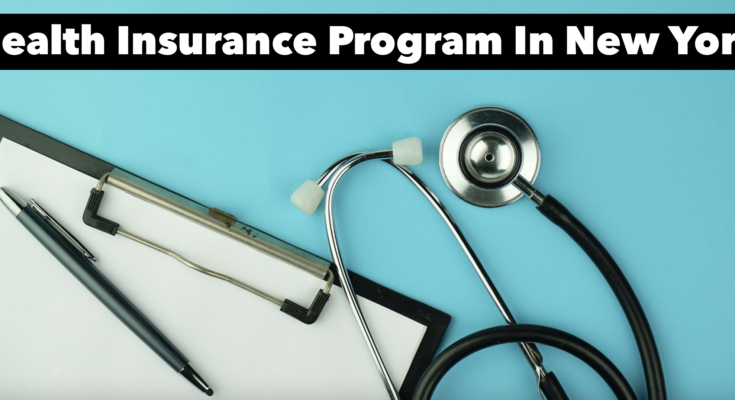New York State has been a pioneer in health care and insurance for many years, developing and implementing robust programs designed to provide comprehensive coverage to its residents. In this article, we will look at various aspects of New York’s health insurance program, including public and private options, eligibility requirements, benefits, and new developments. New York State offers several public health insurance programs designed to cover different segments of the population.
Medicaid Medicaid is a federal-state partnership that provides health insurance to low-income individuals and families. In New York, Medicaid covers a wide range of services, including hospital visits, doctor visits, prescription drugs, and long-term care. The state expanded Medicaid under the Affordable Care Act (ACA), allowing more residents to qualify for benefits. Eligibility: Eligibility for Medicaid in New York is based on income, household size, and other factors.
Beginning in 2024, New Yorkers earning up to 138% of the Federal Poverty Level (FPL) will be eligible. Eligibility criteria may apply for various groups, such as: B. Children, pregnant women, and people with disabilities may differ slightly.
Enrollment: Enrollment is continuous, meaning that eligible people may apply at any time. Applications can be made online through the New York State Health (NYSOH) Marketplace, at local Department of Social Services offices, or through the NYSOH website. Child Health Plus (CHIP) Child Health Plus is New York’s version of the Children’s Health Insurance Program (CHIP) and covers children and adolescents up to age 19 from families whose incomes are too high for Medicaid but who do not have private health insurance they can afford. .
Children from families earning up to 400% of the FPL are eligible. Unlike Medicaid, there is a sliding scale of premiums based on household income. Child Health Plus covers comprehensive services, including routine checkups, immunizations, hospital care, and prescription drugs. Essential Plan The Essential Plan is a health insurance option for low-income adults who do not qualify for Medicaid but whose income is below 200% of the FPL. The program is part of New York City’s efforts to provide affordable health insurance to more people.
Eligibility: Adults ages 19-64 with incomes between 138% and 200% of FPL are eligible. A cost-effective alternative with low premiums and deductibles. Benefits: Essential plans cover a wide range of basic health benefits, including preventive care, mental health services, and prescription drugs. In addition to public programs, New Yorkers have access to a variety of private health insurance plans available through both the individual market and employer-sponsored plans.
Health Insurance Marketplace (NYSOH) The New York State Health Marketplace allows individuals, families, and small businesses to compare and shop for health insurance plans. It is the state’s official health insurance marketplace where consumers can find a plan that fits their needs and budget. Plans are categorized into metal tiers (Bronze, Silver, Gold, Platinum) that reflect the level of coverage and cost sharing. Each plan covers essential health benefits and differs in terms of premiums, deductibles, and copayments.
Subsidies: The Marketplace offers subsidies to eligible people based on income and household size to reduce premium costs. Employer-Provided Insurance Many New Yorkers receive health insurance through their employer. Employer-provided plans often offer a variety of coverage options, and the cost of premiums is usually split between employer and employee. Plans may include Health Maintenance Organizations (HMOs), Preferred Provider Organizations (PPOs), and Exclusive Provider Organizations (EPOs), each with different network restrictions and cost structures.
Direct Purchase Plans Individuals can also purchase health insurance directly from insurers outside of the NYSOH Marketplace. These plans can offer flexibility in coverage and may be a good fit for those who don’t qualify for marketplace subsidies. New York’s health insurance landscape is constantly evolving with changing policies and medical requirements. Current developments include: Expanding Coverage: New York State has made great strides in expanding coverage to cover more low-income individuals and families. Programs such as the Essential Plan and Medicaid Coverage Expansion are good examples of these efforts.
Cost Containment Measures: The government has implemented various measures to contain health care costs, including: B. Price Transparency Initiatives and Efforts to Reduce Prescription Drug Costs. Mental Health Services: Mental health services are receiving increasing attention, with more plans providing comprehensive coverage for mental health care and increased access to behavioral health services. Telehealth: The COVID-19 pandemic has accelerated the adoption of telehealth services. New York City continues to support and expand telehealth to ensure residents can receive medical consultations and services remotely.
Conclusion: New York State’s health insurance program reflects the state’s commitment to providing comprehensive and accessible health insurance. New York strives to meet the diverse needs of its residents through a combination of public programs such as Medicaid, Child Health Plus, and the Essential Plan, as well as private insurance options available through the NYSOH Marketplace and employer-sponsored plans.
As the health care landscape evolves, the state continues to focus on expanding coverage, controlling costs, and improving access to help all New Yorkers achieve and maintain good health.

